|
Join Butterfly Conservation here and help us protect Sussex's amazing butterflies and moths |
Thursday 31 October 2013
Despite the gloomy weather and rain today (31/10/13), my dad and I saw a Humming-bird Hawk-moth. It was keeping in the dry - inside the big Tescos store at Church Road Hove. It disappeared heading towards the cut flowers. (John Heys)
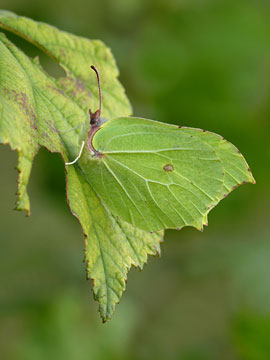
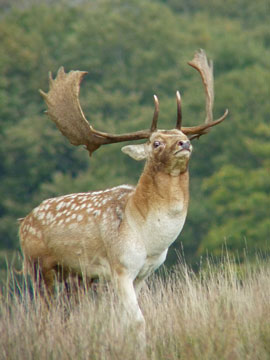
News for Wednesday 30 October: Today I attended my first work party of the season at Heyshott Escarpment, where 7 Murray Downland Trust and BC Sussex volunteers gave the lowermost pit a makeover. This was a late start for me, having been distracted by Long-tailed Blues through October, but operations are already in full swing here. There's plenty to do every Wednesday morning and new helping hands are most welcome. Also, please watch this website for the announcement of other work parties in West Sussex this winter. In a brief spell of really warm sunshine we were joined by male and female Brimstone, the first I've seen for several weeks. John Murray also spotted a Red Admiral. I later dropped in to Petworth Park where the Fallow rut is in full swing - well worth a visit. (Neil Hulme)
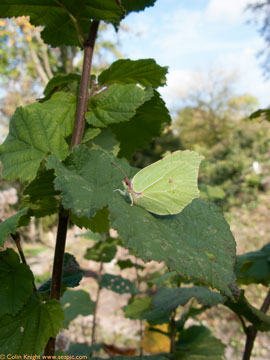
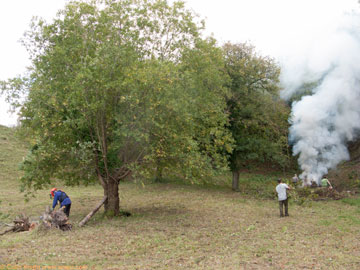
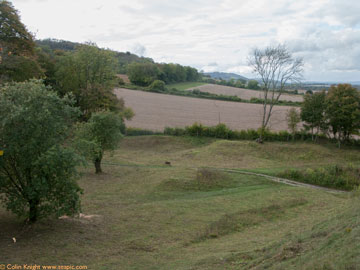
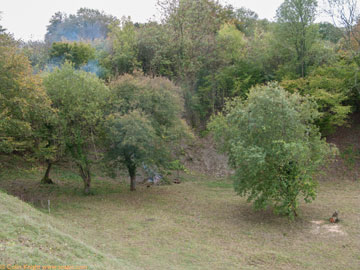
Recent news: On Tuesday a Red Admiral flew around my balcony and yesterday a male and a female Brimstone landed at Heyshott Escarpment. This was a bonus for the volunteers who attended the weekly Wednesday morning work parties. We are preparing habitat for the expansion of the Duke of Burgundy and welcome new volunteers to join us. If you wish to have a go on any Wednesday morning please contact me for details at knightct (at) yahoo.com. (Colin Knight www.seapic.com)
Wednesday 30 October 2013
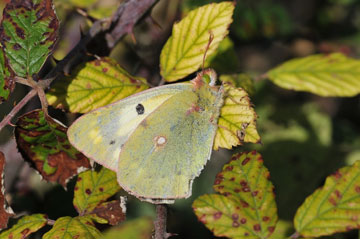
A short visit today in the sunshine to High and Over produced 2 Clouded Yellow. 1 helice and 1 normal. Unfortunately the light breeze was blowing straight onto the scarp face but there were also a few Common Darter dragonflies as well. bobsbutterflies.blogspot.com. (Bob Eade)
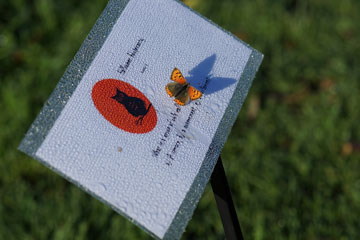
At Pulborough Brooks today one Small Copper and one Red Admiral. (Katrina Watson)
A Red Admiral nectaring on violas and later in the morning a Painted Lady resting before nectaring on ceratostigma in my Seaford garden. (Stuart Ridley)
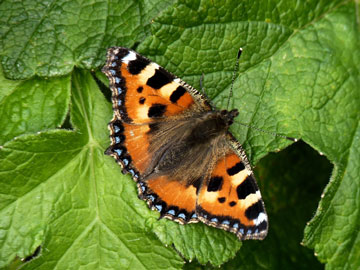
Whilst most Small Tortoiseshells may have already found an overwintering place. I noticed this individual in the garden this morning, the air temperature was a chilly 11 degrees and the sun fairly weak. bbbbrrrr. (Richard Roebuck)
2 Red Admirals at Lancing Ring this morning. (Chris Hooker)
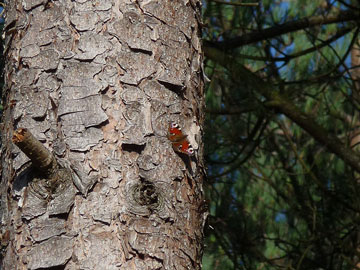
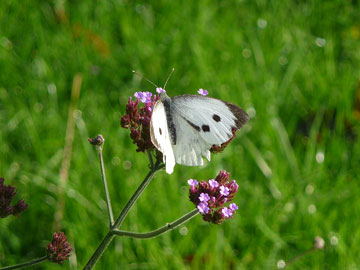
Jo and I had a brief but very pleasant wander around Rowland Wood this morning to see what damage (if any) the "storm" had done - almost none, it transpired. However, we did spot a Peacock sunning itself about twenty five feet up a pine tree trunk. Back home in Lindfield a Comma and a Large White put in an appearance in the garden. (Bob Foreman)
In the calm and sunshine this morning on my allotment on Whitehawk Hill in east Brighton I saw two Red Admirals and one Peacock and then as the cloud and wind got up the whizz of a Humming-bird Hawk-moth caught my eye. It tried to feed on some battered scabious flowers but didn't try for long and whizzed off. TQ329046. (Tessa Pawsey)
Tuesday 29 October 2013
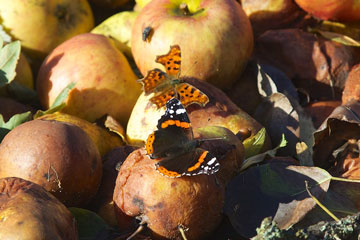
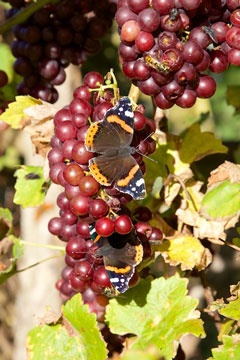
In our garden near Steyning at least 15 Red Admirals and 3 Commas gathered around windfall fruit and on grape vine, along with loads of other insects, including native Hornet. (Pete Varkala)
Battered, bruised but defiant, 2 male Clouded Yellows still patrolling the banks of the Aldrington Canal at Southwick. (Neil Hulme)
Arlington Reservoir - Clouded Yellow. Cooden Beach - 1-2 Clouded Yellows, 1 fresh Comma. Pevensey Levels Red Admiral. Storm? What Storm? (Lindsay Morris)
1 Red Admiral, Langney, TQ630020. (Roy Wells)
"but you never know..." A Red Admiral was enjoying the midday sun in Hailsham Country Park today! (Chris Hooker)
Butterflies at Thorney Island included 3 Clouded Yellows 2 of which were female helice, 3 Comma, 1 Speckled Wood, 10 Red Admirals and 20+ Harlequin Ladybirds. (Barry and Margaret Collins)
A pristine Red Admiral flew around outside our kitchen window this morning. (Nigel Symington, Fletching)
Lovely warm mornings walk around Petworth Park produced a single Red Admiral and a late Small Copper still in fine condition. (Paul Stevens)
This morning in Southwick just south of the railway embankment we saw four Red Admirals. Three were on ivy by the road going under the railway to the west of the station and the other was also on ivy but to the east of the station. We saw another dark butterfly further north - probably another Red Admiral. No sign of anything else. (John & Val Heys)
Monday 28 October 2013
Red Admiral this morning on my blue-painted gate. (Raymond Kemp, Sedlescombe)
Sunday 27 October 2013
Surprised and delighted to see a Painted Lady on our patio in Frant this lunchtime. Struggling against the wind it eventually settled and nectared on some Scabious still flowering in a pot. (Alan and Linda Loweth)
Saturday 26 October 2013
I thought my butterfly season would have finished by now but there are still some tough individuals around! Today, on Lancing Ring, I came across a Speckled Wood battling bravely in the wind. With the weather forecast being what it is I suspect this will be my final sighting for the year, but you never know... (Chris Hooker)
Friday 25 October 2013
A pleasant surprise on my lunchtime walk today in Lewes, in the form of a pristine Comma 'basking' in the overcast conditions! (Chris Hooker)
Thursday 24 October 2013
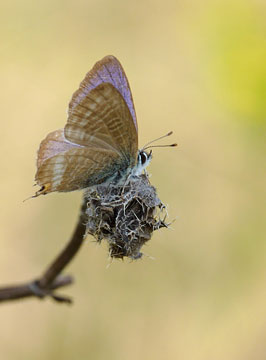
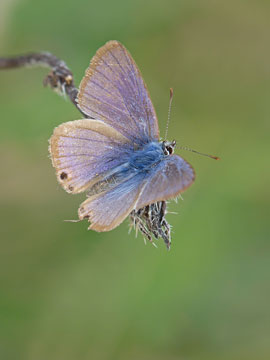
One male Long-tailed Blue has weathered the recent storms at Brighton Racecourse, providing my father with a long-awaited 'first'. More at http://www.ukbutterflies.co.uk/phpBB/viewtopic.php?t=4065&start=10000 (Neil Hulme)
Today two Clouded Yellows flying in the afternoon sunshine at Cooden Beach TQ714065. (Keith & Wendy Alexander)
Clouded Yellow on sea front at Eastbourne (Holywell) on Thursday. (John Parker)
News for Wednesday 23 October: One, possibly two, Small White in our East Dean (TV562984) garden during the afternoon sunshine. (David Jode)
Tuesday 22 October 2013
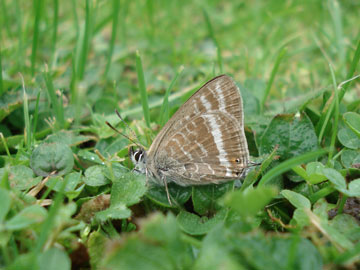
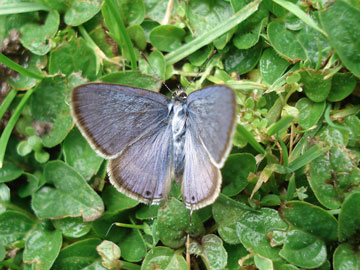
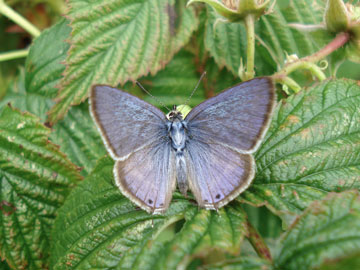
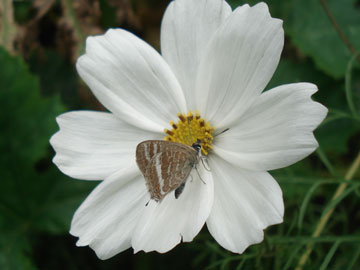
I was very excited, if a little surprised, to find a male Long-tailed Blue Butterfly in my suburban back garden in Western Avenue, Polegate, (TQ585050) this morning, as I dodged the showers to plant out some winter salad leaves.
I followed it around the garden from lawn to veg patch to Cosmos flowers, and managed to get a few photos (above). (Chris Melhuish)
Sunday 20 October 2013
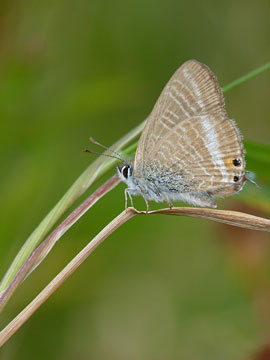
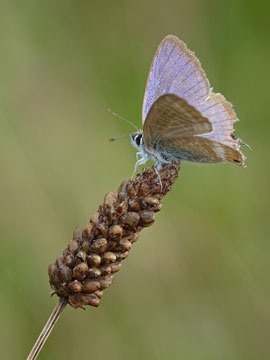
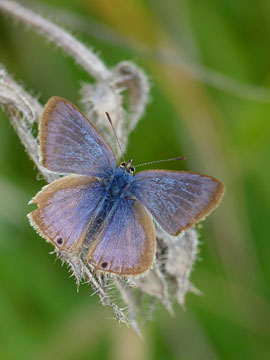
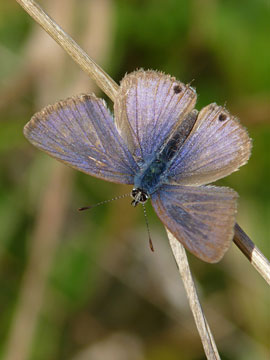
News for Thursday 17 October: While my mother was spending some time in the Royal Sussex County Hospital (many thanks to the excellent surgeon and nurses) last Thursday (17th October), I took a wander around the rough grassland area situated a few hundred metres to the north, between the TV transmitter and Brighton Racecourse. This area borders the extensive allotments where Tessa Pawsey reported a Long-tailed Blue on 8th October. There is probably a wide variety of potential food-plants here, between the potting sheds and shrubs. History has repeated itself because Tessa's Long-tailed Blue, and the minimum of 6 different males I found here, were probably very close to the location of Britain's first, recorded way back in 1859 "near Kemp Town". A further sighting, of which there have been only 22 in Sussex before 2013 (Pratt, 2011), occurred in 1890 "near the racecourse". E. Newman referred to the Long-tailed Blue as the "Brighton Argus". Bearing in mind that all other known Sussex sites for Long-tailed Blue have been empty for a while (although an undisclosed site is reportedly still producing), I was surprised to see this number. I'm pretty sure that the answer lies in the altitude of the site. At a shade under 400' amsl, lower temperatures probably slowed development of the early stages. How many are still lurking on the allotments? Sadly, the weather we are predicted to suffer over the next week may preclude any more sightings this year. (Neil Hulme)
Friday 18 October 2013
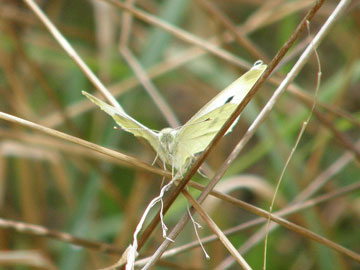
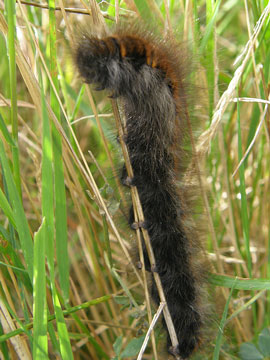
We went for a leisurely stroll around the Tide Mills this morning and saw one Small White, one Red Admiral, one Clouded Yellow and two enourmous Fox Moth caterpillars. (Nick Linazasoro & Drew Easton)
Two Clouded Yellows and three Red Admirals at Pulborough Brooks Nature Reserve, with a Comma flying around our garden in Coldwatham. (Chris Skinner)
A Small White nectaring on red valerian in our East Dean (TV562984) garden at Noon today in full sunshine.
Thursday 17 October: A Painted Lady nectaring on red valerian in our East Dean (TV562984) garden at Noon today in full sunshine. (Carole & David Jode)
Thursday 17 October 2013
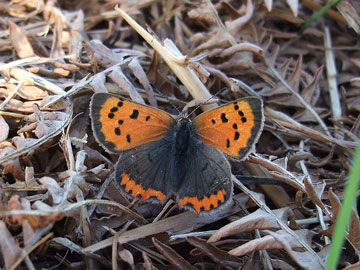
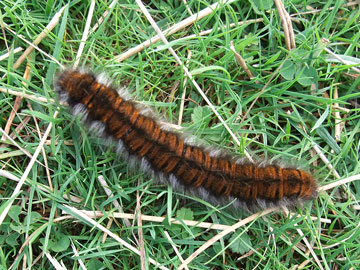
As it was warm enough for a couple of dragonflies to be mating over the pond at my dad's care home, we thought we ought to go again to the Aldrington Canal site in Southwick. We arrived at about 12.45pm. It was sunny and quite warm with a fairly constant westerly breeze while we were there. Like Neil, we found no hint of Long-tailed Blues now. We saw at least 4 and possibly 7 Clouded Yellows. The first 4 were heading east. The 3 after those were heading west, which tends to suggest they were patrolling one way and then the other along the bank and we were actually seeing them for a second time. The only other butterfly we saw there was a bit of a surprise - we expected it to be a Small White but we both got a good look at it and it was a Green-veined White in good condition. As it was still sunny after lunch we headed off to Ditchling Common and saw 5 Small Coppers at the north end of the large meadow on the west side of the B road, mostly where the devilsbit scabious is still flowering well. I can't usually get close enough to Small Coppers to get a reasonable picture with our small camera, but this time I was lucky. We also saw a Fox Moth caterpillar, which can be seen from the picture to be bigger and hairier than the one we saw in August. (John & Val Heys)
Tuesday 15 October 2013

On a brief walk along the seafront at East Preston we came across these Clouded Yellows in cop. Another two were seen nearby and singles of Painted Lady (fresh) and Red Admiral on the way back to Ferring. (Tim Freed)
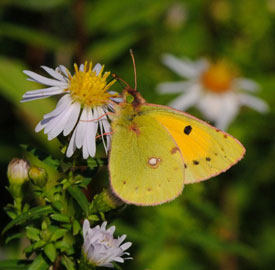
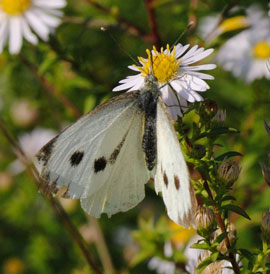
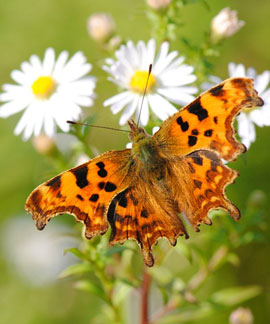
Tuesday in bright sunshine I visited the large patch of garden escape Michaelmas Daisies on Bevendean Down that usually attract late butterflies and bees in October. There were plenty of bees, but only one Comma, one Large White and a Clouded Yellow. (Geoff Stevens)
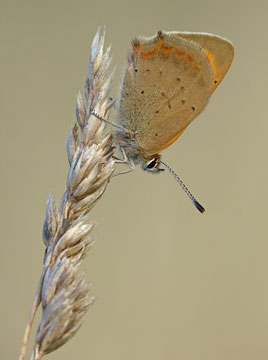
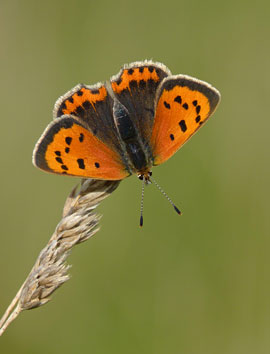
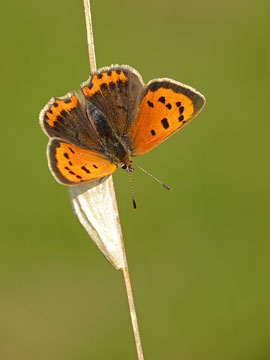
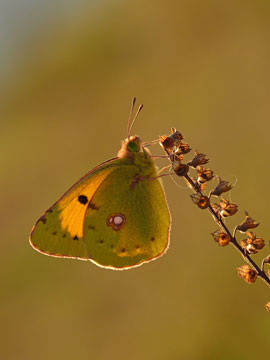
Despite drawing a blank during my thorough search of Sussex Long-tailed Blue sites today (15th October), suggesting that the majority have probably now flown south, there still seems to be life left in the season. A late afternoon stop at Cissbury Ring produced some beautiful, fresh specimens of Small Copper and Clouded Yellow. On a sunny afternoon this is a great place to enjoy the last chapter of a fantastic butterfly year. (Neil Hulme)
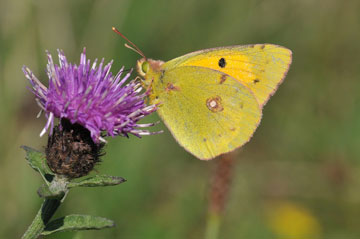
Good numbers of Small Copper seen between Birling Gap and Beachy Head today as well as a few more Clouded Yellow and a Humming-bird Hawk-moth. 5 species of butterfly seen with Meadow Brown, Speckled Wood and Comma making up the numbers. http://bobsbutterflies.blogspot.com/ (Bob Eade)
In the Cuckmere Valley, south of the A259, between 10am and 12.30pm around 10 Clouded Yellow plus Small Copper - 2, Small Tortoiseshell - 1, Red Admiral - 1.
At Crowlink (TV5497) between 2-3pm Red Admiral - 13, Speckled Wood - 2, Painted Lady - 1 and three very fresh Comma. (David Jode)
A lovely fresh looking Peacock thoroughly distracted me from my work as it paid a visit to my garden in Lindfield this afternoon. (Bob Foreman)
News for Wednesday 9 October: Just to add to the sightings of 'British-born' Clouded Yellows, I saw one flying across my Storrington garden on 9th October. I spotted it approximately 50 metres away and was confident of the ID and then eventually it flew close by and I was able to confirm. When attempting to identify butterflies at distance Clouded Yellow and male Brimstone must surely be on a par? This is the 5th Clouded Yellow seen in my garden this year and as previously posted, a new species for the garden. (Martin Kalaher, Storrington)
Monday 14 October 2013
News for Tuesday 8 October: My father, Roy Symonds reports the following sightings on 8th October from Kingley Vale National Nature Reserve (SU824098). Temperature was 18 \B0C. Brimstone (1M), Small White (1), Speckled Wood (2), Comma (1) and Red Admiral (1). (Richard Symonds)
Saturday 12 October 2013
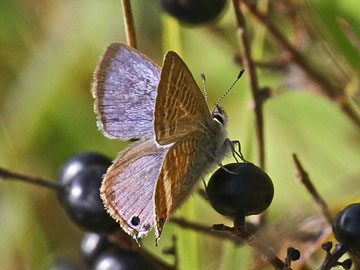
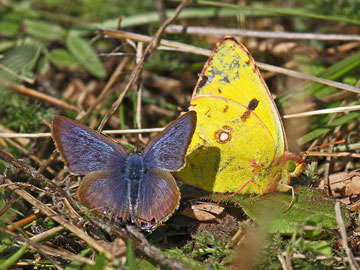
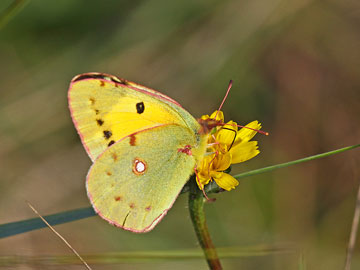
We had not checked your site for two weeks, so surprised to see that the Long-tailed Blue and Clouded Yellow were still be seen at the Southwick site. With directions from previous entry we set off, arrived at 11.30am and joined 6 others. Within 10 mins one was spotted, not perfect but when it is your first... does it matter? Had numerous sightings over 2 hours, plus Clouded Yellows, even saw and photographed the two together. So thanks to your sghtings page... we will check more often. (John Tomsett)
Just before midday today Amanda and I saw a single Long-tailed Blue. It was on a hebe in a front garden in Falaise Road, Mount Pleasant, Newhaven (TQ458021). It was one grid square away from falling within our 'home square'! I thought we had missed out on this butterfly, so we were thrilled to finally see one. (Steven & Amanda Teale)
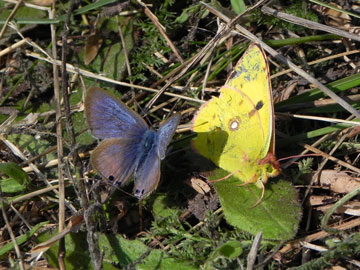
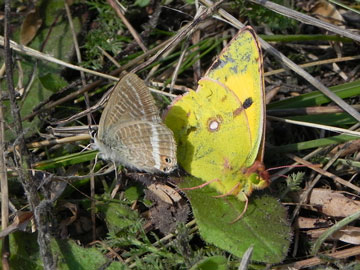
On the north bank of the canal at Southwick on this sunny morning were 2 male Long-tailed Blues pleasing the small gallery of observers. One LTB was in good condition sporting both its tails and probably the same individual that showed yesterday (Friday) before the rain came. The other one was more worn with only one tail. The supporting cast included at least 4 Clouded Yellows, Small Copper and a Red Admiral. (Dave Sadler)
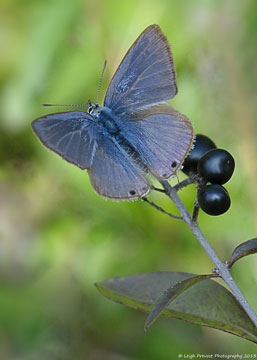
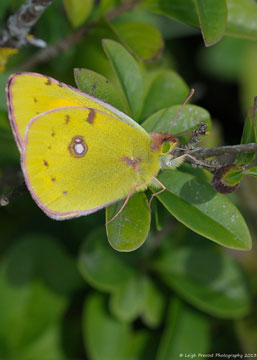
I couldn't resist another look for the Long-tailed Blues at Southwick, especially as they are only 20 mins drive away. On my third visit this week, I was rewarded with some much better views than I had earlier on in the week. I suspect with the weather forecast to change for the worse this may be my last Long-tailed Blue of the year and for the foreseeable future. Hopefully not. Some more photos here also: http://www.flickr.com/photos/48896022@N08/.
Along with the male Long-tailed Blue, at least 4 Clouded Yellows (some in superb condition still), a seemingly fresh Comma, 1 Red Admiral, and 1 tidy looking Small Copper. Not bad for mid October!
What a year of Butterflies it's been. (Leigh Prevost)
Thursday 10 October 2013
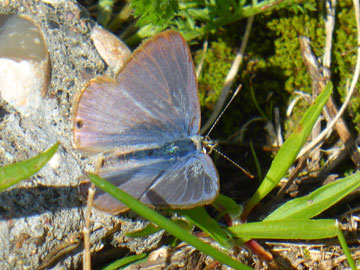
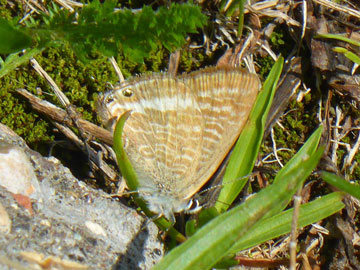
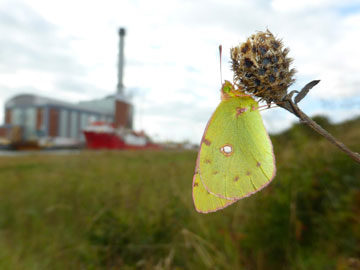
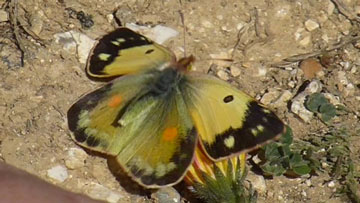
Went to have alook at Southwick site, for Long-tailed Blue. At about 11.55 five of us struck blue with tails on when a male suddenly appeared, it settled afew times before alighting on small rock on south facing bank near brick building. A few of us have never seen one before so this was our moment to be wowed by this rare butterfly. I managed two photos, then off it went, but back again at about 12.06 more photos taken then it flew up bank and over main road at 12.08pm. Also a helice Clouded Yellow. I'm glad I made the effort to see it, and to see it so late in season on a chilly day, I never thought I would ever see one. (Peter Farrant)
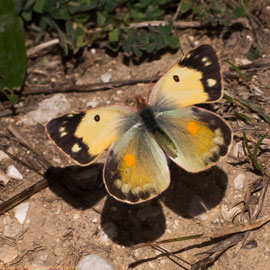
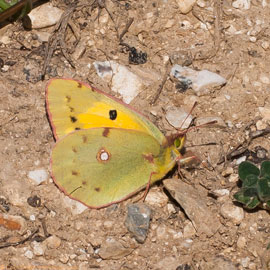
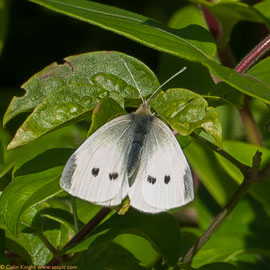
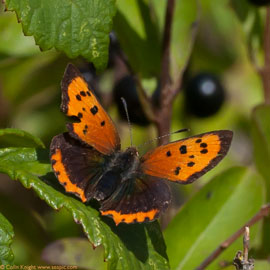
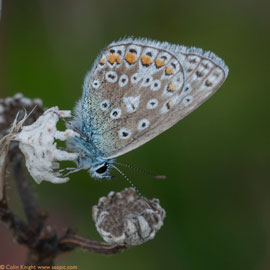
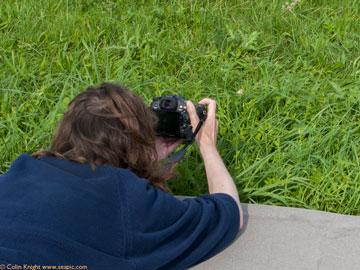
The past two days I have been at Southwick enjoying the views and the butterflies in the company of other enthusiasts. We believe each day is our last chance of a sighting, but every day the sun shines and we migrate to our new favourite place. Five species are still showing here: helice Clouded Yellow, Common Blue, Small Copper, Small White and Long-tailed Blue. (Colin Knight www.seapic.com)
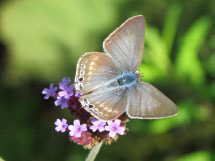
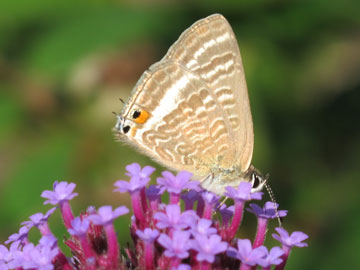
Above, Long-tailed Blue seen in Adam Ford's garden in Alfriston on Sunday 29 September.
Wednesday 9 October 2013
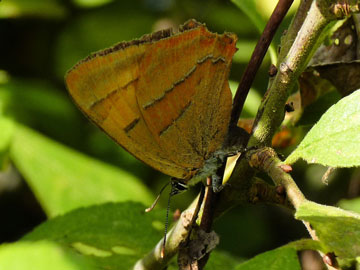
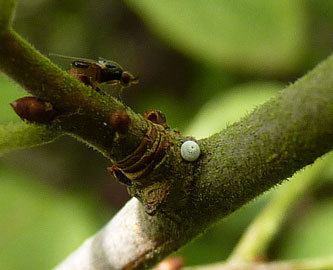
Today at 1.45pm and 16 degrees my special garden visitor, a female Brown Hairstreak was busy egg laying all over the place. In the sloe hedges and also on young sloe shoots, basically anywhere that took her fancy. Marvellous sight at this time of year. (Richard Roebuck)
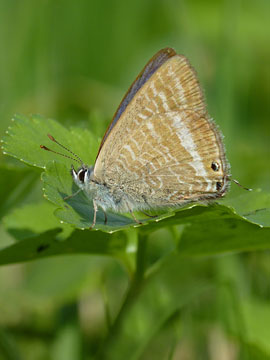
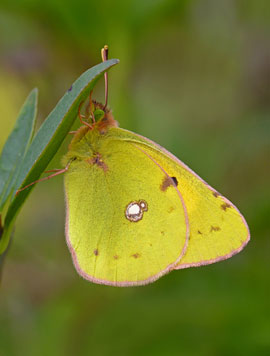
3 different male and 1 female Long-tailed Blue just after midday at the Southwick site first reported by Dave Sadler, and more latterly by Val and John Heys. All were seen in the vicinity of the small brick building at TQ24820502. A handful of Clouded Yellows and a Common Blue also present. More at http://www.ukbutterflies.co.uk/phpBB/viewtopic.php?t=4065&start=10000. (Neil Hulme)
Long-tailed Blue news for Sunday 29 September: One Long-tailed Blue seen in my garden in Alfriston on September 29th. The butterfly spent its time feasting on Verbena bonariensis - I have no wild peas! (Adam Ford)
Tuesday 8 October 2013
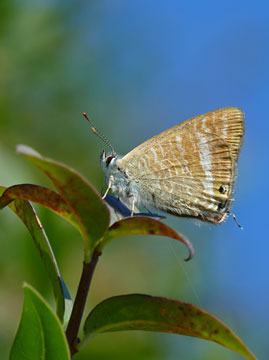
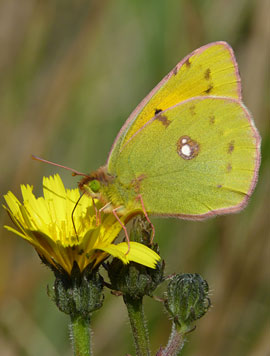
Today at Southwick (Aldrington Canal) a male Long-tailed Blue holding territory near the small brick building described by John and Val Heys. Also 6 beautiful, British Clouded Yellow (including an egg-laying helice), a Small Copper, Common Blue and a couple of Small White. Another male Long-tailed Blue on the outskirts of Seaford, together with half a dozen Red Admiral. More details and some thoughts on the Sussex Long-tailed Blue Festival at http://www.ukbutterflies.co.uk/phpBB/viewtopic.php?t=4065&start=10000. (Neil Hulme)
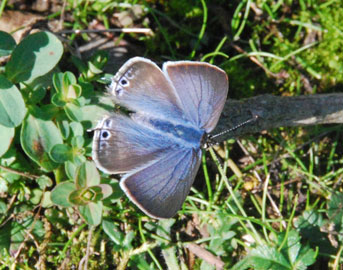
I went to Newhaven Tide Mills today, thinking it might be the last chance to see a Long-Tailed Blue before the weather turns cold. After about 45 minutes, I and another enthusiast were rewarded with the appearance of a nice fresh male. We got some record shots before it flew off. I saw it again 10 minutes later about 25 yards away (probably the same individual), and this time we got some closer shots. (Andy Wilson)
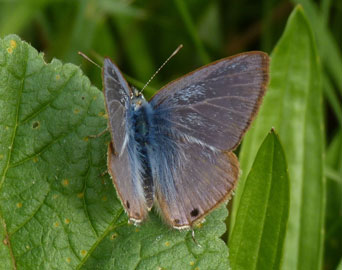
Many thanks to Jon and Val Heys for the recent report from Alrdington Canal, Shoreham. It was so accurate that it could very well have been the same Long-tailed Blue sat on the small mound at 14.59 p.m. today. I took one shot for the record and then it was off in the strong breeze. I checked out the lower slopes and when the sun finally came out again I found another male battling against the strong breeze. Clearly larger and a violet blue hue distinguishes it easily from a few Common Blues I also saw on the wing. These are feisty characters and I can see how they made it across the channel without too much trouble. So glad to have finally joined the blue club at this late stage in proceedings. (Richard Roebuck)
Long-tailed Blue has lost one tail and is not as active as yesterday, 3 Brimstone (one very pale), Common Blue, Small White. I missed my lunch, but will no doubt make up for it later! Lindsay Morris)
An even better late butterfly day today on my allotment on Whitehawk Hill Road in east Brighton. A Long-tailed Blue! I was eating my sandwiches when I saw a blue butterfly on the Succisa pratensis I grow in one of my flower beds. I casually got up, sandwich in hand, to go and have a look and nearly lost my sandwich as I dashed back to my seat to forage for my glasses in my rucksack to get a proper look. It had lost its tails but had the two black dots at the end of the wings and the lovely ripple markings on the back of the wings. Despite having lost its tails its body was beautifully covered in rich blue hairs which almost shone. It also spent time on the flowers of Verbena bonariensis. Having enjoyed reading about other people's sightings on the website I never thought I would see one. Sorry, don't own a phone or camera so no photographic evidence. There are patches of everlasting pea around the allotments area, and some garden pea plants still about on people's allotments. Also good numbers of Commas on the michelmas daisies, Peacocks and Red Admirals and cabbage whites. (Tessa Pawsey, TQ329046)
A warm sunny day encouraged a few butterflies into the garden. Seven species of butterflies recorded, nectaring on Michaelmas Daisies or Ivy: Small White (2), Brimstone (1m,1f), Large White (1), Red Admiral (1), Comma (1), Peacock (1) and Small Copper (1). (Martin Kalaher, Storrington)

Another male Long-tailed Blue on Greenway Bank this afternoon. Not really where I would have expected one!! (Bob Eade, bobsbutterflies.blogspot.com)
A not-too-tatty female Brown Hairstreak inches away at eye-level at Pulborough Brooks RSPB today, just outside reception. (Russ Tofts)
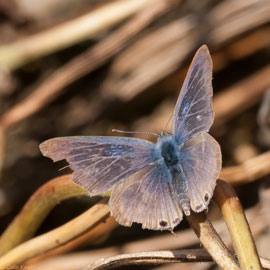
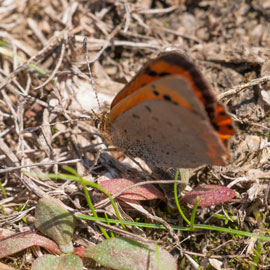
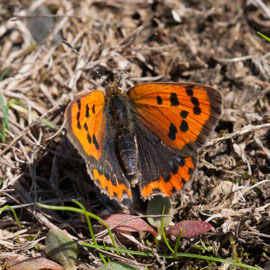
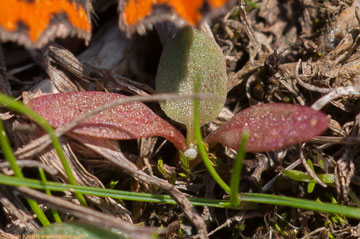
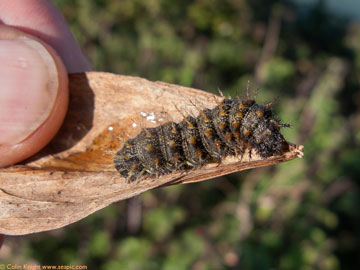

News for Monday 7 October: I have spent more time than I usually do in the Hunt for the Blue October (butterfly). On Monday I decided to join the hordes at the Seaford bank site. The perilous climb was rewarded with two worn [Long-tailed Blue] males fighting, one of which landed a number of times on a bed of dead pea plant. We also saw a pair of Clouded Yellows fighting on the slope. I then checked out the Tide Mills without luck, but was instead delighted to find a Small Copper laying on a bank and managed to get some egg shots. A Red Admiral larva on stinging nettles completed an enjoyable day. (Colin Knight, www.seapic.com)
Monday 7 October 2013
A lovely late day of butterflies in the garden where I work north of Shoreham airport, Commas, Small Tortoiseshells, Red Admirals, Peacocks and a male Brimstone. (Tessa Pawsey, TQ196063)
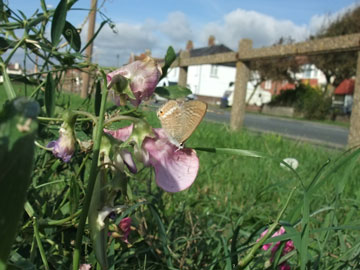
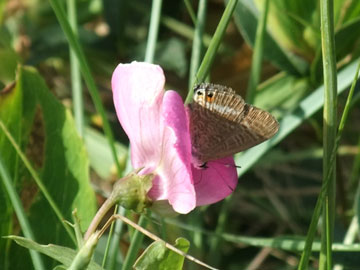
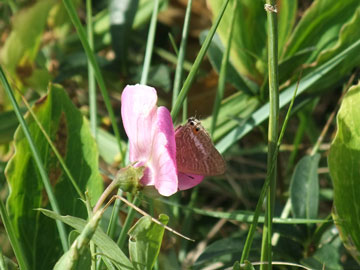
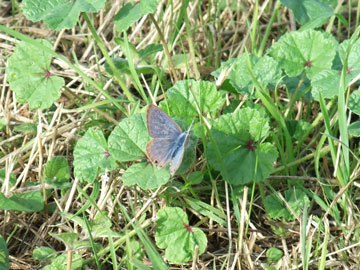
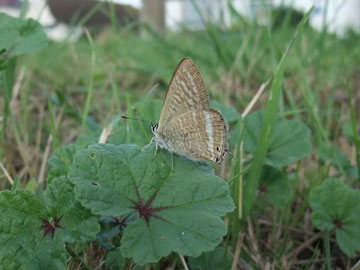
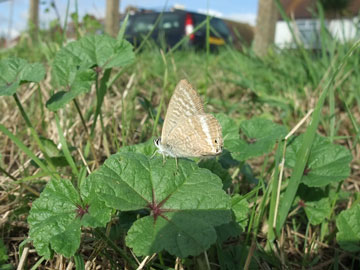
Encouraged by the report of the female Long-tailed Blue at Southwick by the Aldrington Canal, we had a search on Saturday (4th) only to have the sun go in as we arrived. However, we found the food-plant flowering nicely up by the A259 (less well down the bank) and saw quite a few Small Whites, a Silver Y moth and a moth we couldn't identify in rather nice shades of brown and buff. Just as we were leaving we noticed a blue butterfly which flew off too quickly to be identified and fought a brief aerial battle with a slightly larger butterfly, both disappearing totally when they came to ground. We had another visit in the sunshine today and were very pleased to see at least 2 Long-tailed Blues, 4 Clouded Yellows and some more Small Whites. Just to make it a bit trickier, there was also a Common Blue but it stayed in an area of short grass at the bottom of the bank. The first 3 pictures I'm guessing are a female Long-tailed Blue as we saw it only by the pea plants. The next 3 I'm assuming to be a male, as it had a territory near the little brick building by the traffic lights - there is a little mound just by the path and we watched it launch an attack on a passing Small White from there. Val also saw it a bit earlier on in another aerial dual against a dark butterfly, so possibly there were two Long-tailed Blues with adjacent patrol areas. (John and Val Heys)
Butterflies at Thorney Island today included 6 Clouded Yellow in a lucerne field south of the Great Deeps on the west side at SU750036, sadly just as we were leaving this site the farmer started cutting the field. There were also 8 Small Copper in pristine condition (third brood) at Longmere Point SU768011. Plus 2 Speckled Wood, 7 Small White and 2 Comma at various locations on the Island. (Barry and Margaret Collins)
Another male Long-tailed Blue found today by Pete Varnham at Newhaven near The Hope. (Bob Eade)
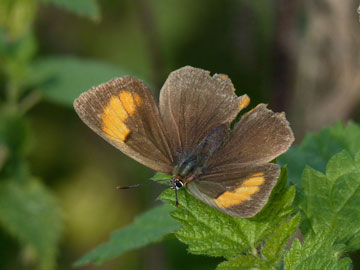
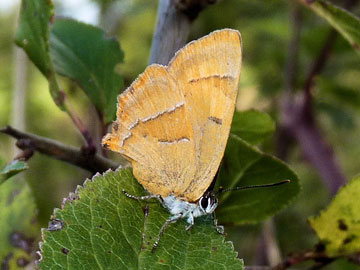
On Sunday I saw 5 Small Coppers all in good condition, including one mating pair, in a grassy area by the side of Reeves Wood. In the wood itself about seven Speckled Woods TQ7216 Today at 1.15 p.m. another female Brown Hairstreak appeared in the garden at Ashington. Having compared the wing damage with the individual I reported on the 29th of September this is actually another female, albeit in slightly better condition overall, but missing her tails. She was also fairly weak flying and ending up half way up a Leylandii tree before I lost sight of her. (Richard Roebuck)
Crawley Down - Garden butterfly numbers going up again here. Today 4 Red Admiral, 1 Comma, 1 Small Tortoiseshell, 1 Large White on Buddleia "Beijing" and "Sungold". 2 Small White on Erysimum. A Speckled Wood briefly through the garden. An Angle Shades moth on buddleia after dark, along with several other moth types I could not identify but overall numbers low considering the perfect mild calm conditions. (Jonathan Ruff)
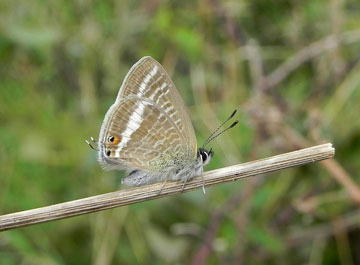
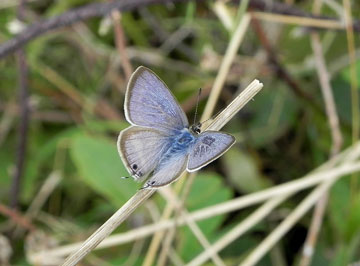
Long-tailed Blue news from 5 October: This male Long-tailed Blue seen near Beachy Head. (Nigel Kemp)
Finally... Mike Warren e-mailed to point out that there are a number of butterfly sightings (including Long-tailed Blue) posted on the Sussex Ornithological Society website too.
Sunday 6 October 2013
Henceforth and from this day forward, 6 October should forever be known as "Long-tailed Blue Day". ed.

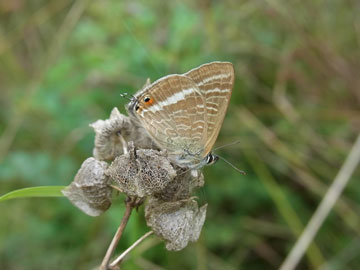
On Saturday afternoon after shopping I thought I saw something flying in our Seaford front garden which we have converted into a small wild flower meadow. On closer inspection couldn't believe it when we found 2 Long-tailed Blues circling each other! Conditions were overcast but warm and one fresh male settled down so we managed to get some decent photos.
Sunday 6th October: Back out early to the sunny front garden but no sign of the Long-tailed Blues. Still manged to see 1 Small White, 1 Small Copper and 1 Speckled Wood. Then after about an hour in flew a Long-tailed Blue - it didn't settle or stay long but a definite sighting and not the one photographed yesterday. (Simon, Fran and Amy)
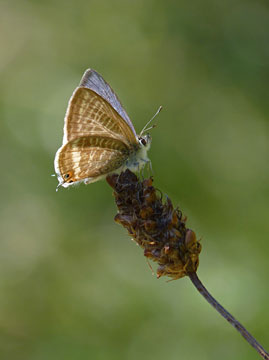
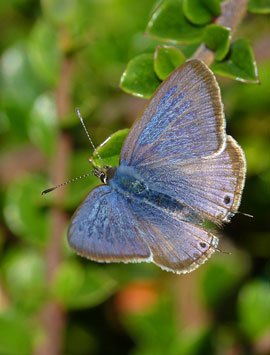
7 different male Long-tailed Blues seen today at a site on the outskirts of Newhaven/Seaford, with James Arnott, Brian Henham and other visitors. Watching a British Long-tailed Blue viciously attack a British Clouded Yellow will remain one of many happy memories of this fantastic season. (Neil Hulme)
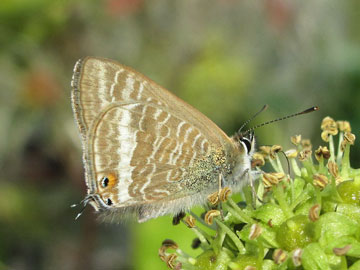
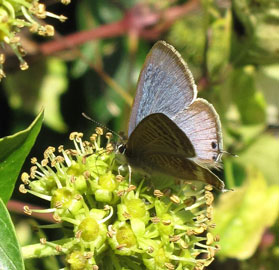
A trip to Beeding Cement Works near Shoreham produced a fresh male Long-tailed Blue which visited the large clump of ivy adjacent to the parking area (TQ199086) between 11.35 and 11.45. It then flew east, back over the fence into the everlasting peas within the cement works. The ivy also hosted 3 Red Admiral and 2 Comma and nearby was a Small White and a Speckled Wood. My colleagues also identified a Peregrin Falcon which was chasing a Honey Buzzard over the cement works.
Later, a walk along the seafront at Lancing produced 2 Red Admiral, 1 Comma, 1 Speckled Wood, 5 Small Whites, and 3 Clouded Yellows. The yellows were at TQ188038 and TQ195038. (Vince Massimo)
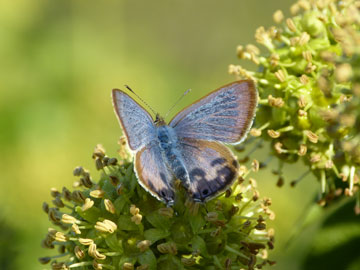
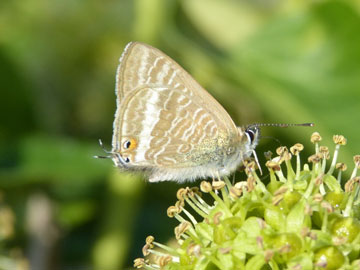
Following Neil's sightings of Long-tailed Blue at Shoreham I decided to make a visit a the weather looked fine and I am glad I did. During the morning had sightings of four individuals with two settling for lovely views, both males, and I think different individuals. Also saw pristine Commas and Red Admirals with the bonus of Honey Buzzard avoiding attacks from the resident Peregrines. Great morning! (Mark Tutton)
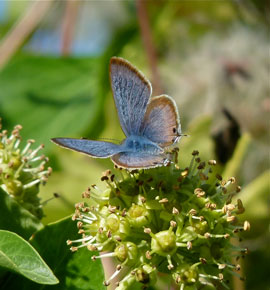
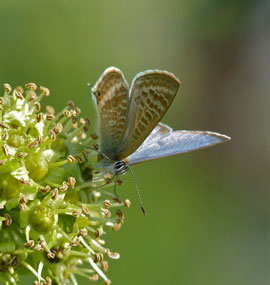
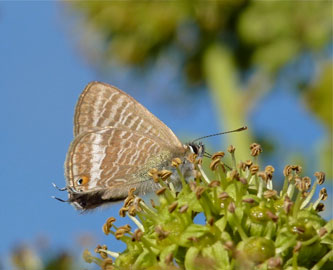
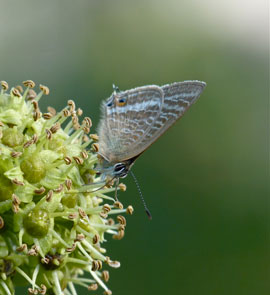
Long-tailed Blue nectaring on ivy at 11.45am outside the cement works at Upper Beeding. Thanks for the tip Neil :-) (John Williams)
Female Long-tailed Blue in my garden, Small Dole, feeding on hawkbit and seemed to hanging around the dwindling sweat-peas. Seemed in good condition with tails present. By the time I'd run back to the house and grabbed the camera, she was gone, and despite patrolling likely areas repeatedly, didn't see her again. Other butterflies, Comma, Speckled Wood, Small Copper and Brown Argus. (David Plummer)
My husband and I have just come back from Seaford Head, when we were there I was lucky to have seen a Long-tailed Blue butterfly, I recognised it straight away as we have them on our land in Spain all the time. (Sandra and Peter Solly)
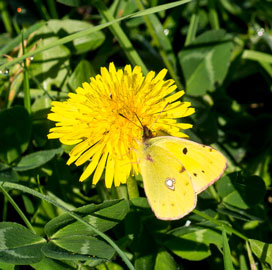
Found 4 Clouded Yellows all in one field feeding on Dandelions whilst out walking at Treyford today. (Paul Stent)
Butterflies of note at Thorney Island today included; Clouded Yellow 8, Red Admiral 6, Small Copper 2 and several Small Whites. (Barry and Margaret Collins, Malcolm and Joyce Hill)
Today we had a lovely bike ride from East Blatchington to Bo Peep. The camera was not taken on this trip but we still did our bit for butterfly spotting and saw two lovely Clouded Yellow, several Red Admiral, Speckled Wood, Large White, Small White and a Comma. (Nick & James Linazasoro)
Saturday 5 October 2013
Couldn't find the yellow-browed warbler at Seaford Head this afternoon but we did see a Crimson Speckled Moth. The moth was by the kissing gate on the cliff top path heading west from Hope Gap. It just looked plain white in flight but when it landed the fore wings were covered in tiny orange and black spots. Cheered up a disappointing afternoon. (Ed Lough)
A Clouded Yellow was seen at Alciston this morning. (Michael Hawkins)
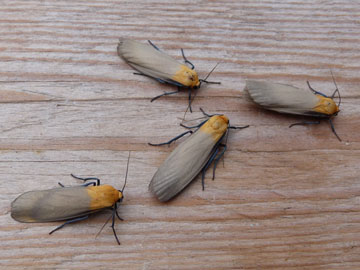
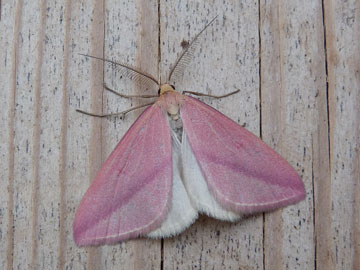
Recent news: Had a bit of a glut of Four-spotted Footman, Lithosia quadra in the moth-trap at the Wild Flower Barn, Herstmonceux on Wednesday night (2nd Oct) with about 12+ moths... then 6 x Vestal, Rhodometra sacraria last night including this specimen with all pink forewings (above). Is this pink form particularly common? I assume it's possibly a result of high temperature exposure at the pupation stage... though not sure whether that was here or abroad? (Mike Mullis)
Friday 4 October 2013
On Friday, despite the wind and intermittent sun we saw 2 Speckled Woods, a devil's coach-horse beetle, and 2 Meadow Browns during a circular walk from Devil's Dyke to Saddlescombe and back. (John & Val Heys)
Thursday 3 October 2013
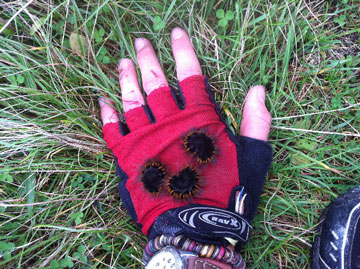
My son Theo has taken to mountain biking in a big way, but I am pleased to say that although he appears to charge around at speed and covers great distances he still keeps his eyes open and reports back his findings; not just the larger mammals like badgers and deer but beetles and butterflies. Today he took this shot of three Fox moth caterpillars he found at South Harting. (Josse Davis)
Wednesday 2 October 2013
At Aldrington Canal, Southwick a female Long-tailed Blue around the Everlasting Pea plants. Also there, one or two Clouded Yellows and, interestingly, an immature male Red-veined Darter dragonfly. (Dave Sadler)
Tuesday 1 October 2013
Long-tailed Blue at Seaford Head reported yesterday on Sussex Ornithological Society Website by Lee G R Evans. (Leigh Prevost)
Monday 30 September 2013
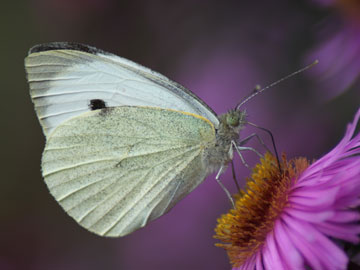
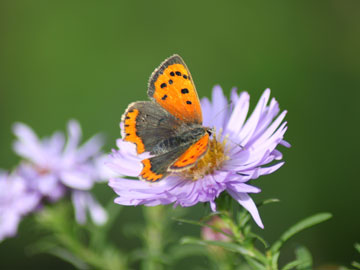
Recent news: It wasn't a particularly nice afternoon but Mary and I decided to check Parham Estate (nr Storrington) on the 26th when we had 10 Small Copper, all on Ragwort.
We haven't had any Large White in the garden for many weeks but yesterday morning (29th) three appeared briefly on the Michaelmas Daisies. There was also Small White (2), Red Admiral (1), Small Copper (1).
We went for a nice walk around the Burgh area. Unfortunately, we got the timing wrong as the sun disappeared after approximately an hour but not before we recorded the following, Small White (30), Speckled Wood (10), Comma (9), Brimstone (3f), Red Admiral (2) and Peacock (1).
Referring to Richard Roebuck's comments yesterday about the Brown Hairstreak he had in his garden; The female I had in my garden in Storrington this year also seemed unusually large. Approximately four years ago I had three of this species (both sexes) nectaring on Hemp Agrimony and had lots of opportunity for close observation but none was the size of the specimen I had this year. Finally, (and I think I have already confessed the following!), I cut off some high branches of Blackthorn a couple of years ago and was surprised to see 5-6 eggs at the top of bush, the highest of which must have been at least eight and a half feet off the ground. Clearly, whilst we find the eggs lower down this species is not averse to egg laying right up the top of the bush (whether these 'higher' eggs are more vulnerable to predation is another matter). (Martin and Mary Kalaher, Storrington)

On Friday 27th September the formal handover of the Brighton & Hove and Lewes Downs Biosphere Reserve bid to UNESCO took place in Brighton, beneath the largest known English Elms, the Preston Park Twins.
The Sussex branch of Butterfly Conservation is a partner of the Biosphere Reserve application and we are hopeful that the bid is a successful one. Dr Dan Danahar our representative at the ceremony spoke with James Bridge, Chief Executive of the UK National Commission for UNESCO and reported that he said the bid was a high quality document and without prejudicing the outcome, he thought it had the best possible start. The results of the application will be known in the summer of 2014.
Sunday 29 September 2013
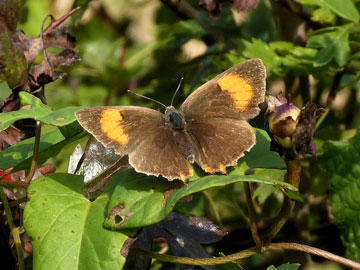
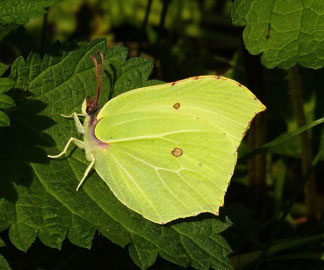
This morning started with foraging for Blackberries, Apples and Damsons. On my return, At about 11.45, I noticed a "large" butterfly flitting slowly around a dead fleabane plant in the garden. In flight I thought the colours were odd until it landed and eureka my first female Brown Hairstreak in the garden. A long haul from the eggs I had found in February on sloe shoots. She had her tails but was a bit worn. Immediately she started egg laying, but not where you would expect. Right on the top of the middle of the sloe hedges, I had trimmed 3 weeks ago. As per normal she circled down round the upper stems. In between egg laying she was actually fairly slow flying over the hedge. She seemed particularly large and I reckon she was about the same size as a Small White. Unfortunately during nipping over the garden hedge we lost her and that was that. However perhaps a rather late but interesting record nevertheless. Recently Speckled Woods, Commas, Red Admirals and Whites have frequented the garden with numerous dragonflies. A male Brimstone this afternoon was also nice sight. (Richard Roebuck)
Butterflies seen at Thorney Island today included; Speckled Wood 1, Small Heath 2, Red Admiral 5, Comma 1, Small White 15+, Clouded Yellow 4. (Barry and Margaret Collins)
Saturday 28 September 2013
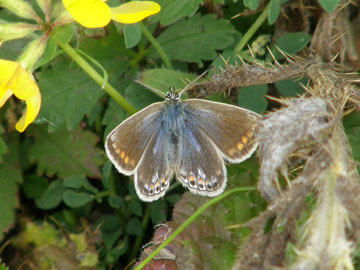
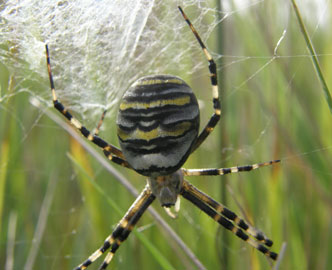
As the weather became sunny we ventured to Newhaven Tide Mills to try and find the elusive Long-tailed Blue. Alas no luck again but we did find one Common Blue and two Red Admiral and several Small White and Large White. (Nick Linazasoro & Drew Easton)
Failed attempt to see Long-tailed Blues at Newhaven, but wasn't exactly sure where to go (any directions would be good, might go tomorrow). And it was cloudy and breezy. Oh, and I had to get back early for our dog. So hard to understand how I could possibly have missed out!
Sunnier in the afternoon, so back home, 2 lovely Clouded Yellows on the east bank of the R. Adur, just south of the Toll Bridge. (Chris and Ellie Corrigan)
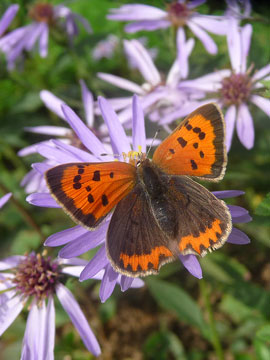
No Long-tailed Blues or Swallowtail caterpillars on the fennel (and yes, I have looked) up here in Lindfield, but we did have this lovely Small Copper in the garden this afternoon. (Bob Foreman)
Friday 27 September 2013
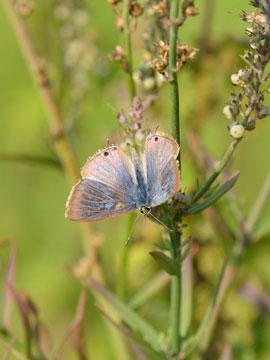
Whilst taking a tea break from gardening this afternoon I noticed the jinking flight of a blue over my garden in Bury. Thinking that it appeared rather grey I wondered whether it could be a Long-tailed Blue. It didn't hang around for me to be sure! A couple of minutes later it reappeared and eventually landed to nectar at some purple toadflax. Sure enough there was a Long-tailed Blue in my garden! I quickly grabbed my camera and managed two shots before it again disappeared. Moments later it did a final pass before heading south.
I also found 9 Small Tortoiseshells already hibernating in several of my swift boxes yesterday, along with a pair of Small Whites mating and females still egg laying. (Paul Stevens)
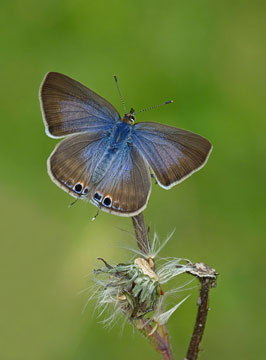
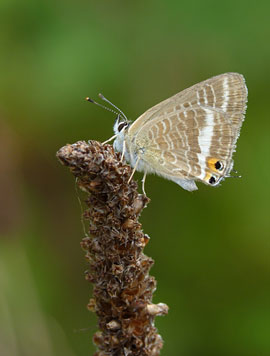
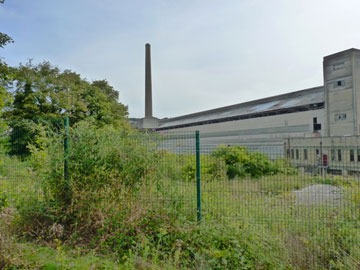
This incredible year for the Long-tailed Blue continues. Just before midday I stopped at a site I've looked at perhaps ten times since early August, having noticed the large quantity of Broad-leaved Everlasting Pea along the road verges and over rough ground around the derelict (but still operational) Beeding Cement Works near Shoreham (TQ19910869). This time I got lucky and I saw 2 female LTBs in a quite short period of time. Having spent many hours in Kent looking at this species, these were my first in Sussex. One was newly minted and the second was in fair condition, fully tailed, but had a slightly 'nibbled' fringe. The best example flew north over a hedge, heading towards some of the large clumps of pea growing along the roadside. The second specimen flew over the security fence but was visible for well over an hour, resting during cool periods and occasionally nectaring on ragwort and pea flowers. This gave me time to make a few 'phone calls and a string of visitors were able to enjoy the butterfly. While there Pete Varkala found a female Brown Hairstreak, providing a rare combination!
If visiting: Please do not block the track leading up to Cliff house - this rough track is a private driveway. There is only room for two cars in the 'layby' at the grid ref given, without causing an obstruction. Parking is available around Dacre Gardens, a couple of minutes walk further up the road (north). Please do not venture up the track/private driveway or cross the private lawned area to its left. Please do not attempt to climb the fence - this is an active industrial site. Please do not ask Dudman's staff if you can enter the site - they will not allow this on H&S grounds. (Neil Hulme)
Thursday 26 September 2013
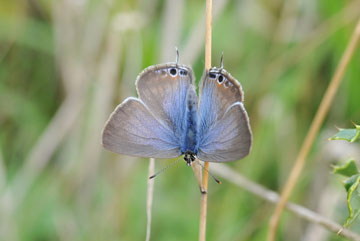
After far too many hours spent looking a superb female Long-tailed Blue put in an appearance at Newhaven yesterday. More at bobsbutterflies.blogspot.com. (Bob Eade)
Recent news: Mary recorded seven Small Copper on the 25th, whilst walking in Parham Park (nr Storrington). All were feeding on Ragwort. I haven't kept an accurate count but the first record for this species in the garden was 22nd August and I doubt if I have seen more than 15 all year in my locality. It would seem that they are having a late burst of activity.
I have lots of Everlasting Pea in one of our herbaceous beds but unfortunately most of the flowers had 'gone over' by the time the Long-tailed Blues were first recorded. I can still hope that one may put in an appearance!
One of the herbaceous beds in the garden is in need of a makeover so I decided to download the list of 100 best butterfly nectar plants on the Butterfly Conservation website. Here it states that Buddleia is first favourite with 18 species and first on the list is Brimstone. We have Everlasting Pea growing through a bed with three sizeable Buddleia and even when there are scores of flower heads available Brimstone will always (I do mean always) choose Everlasting Pea in preference to Buddleia. I don't suppose the list will be amended but I thought it worth mentioning. (Martin and Mary Kalaher, Storrington)
Wednesday 25 September 2013
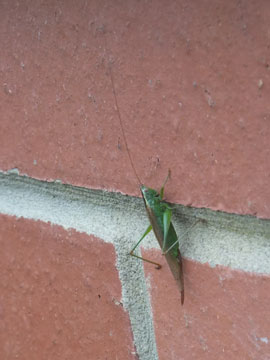
On Sunday there was a Comma in our garden in Hove and also the insect shown in the picture. It had amazingly long antennae which it could swivel independently. In our insect book it looks most like the long winged conehead, but I'll be happy to be corrected. The book says it likes long grass and we have been allowing parts of the lawn to get longer than we used to. On Tuesday we saw a Red Admiral by Kings Lawns on Hove sea front followed soon after by an unexpected glimpse of Ed Miliband taking a pre-conference speech walk. Today (Wednesday) at the county cricket ground we were at the top of the main pavilion watching the play through an increasingly heavy sea fret, so were quite surprised to spot a Small White, a Red Admiral and a Small Tortoiseshell winging past us. (John A Heys)
Tuesday 24 September 2013
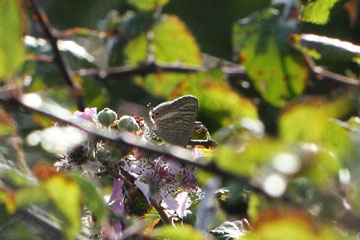
Today I had a wonder around the Beachy Head area looking for Long-tailed Blues. Soon after arriving I found a lovely female Long-tailed Blue, she was so active in the warm weather that I could only manage a quick record shot 'at distance'. Although the encounter was all too brief I was especially thrilled to see this rare migrant for the first time. (James Arnott)
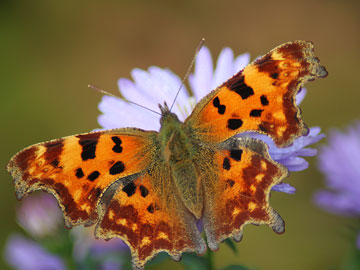
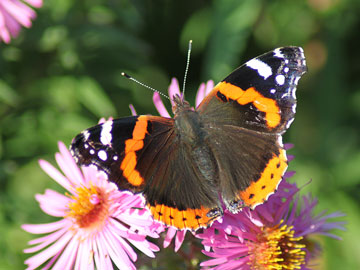
Two consecutive afternoons when the sun has shone and it has been very pleasantly warm. Oh what bliss! There is not a lot of nectar available right now. Ivy is just coming into its own but otherwise it mostly down to Michaelmas Daisy (what would we do without it?). In my Storrington garden there was Brimstone (2m, 1f), Comma (2), Small White (2), Small Tortoiseshell (2), Red Admiral (1), and on Chantry Hill the following: Meadow Brown (40 - including a mating pair), Common Blue (6), Brown Argus (4), Brimstone (2m, 1f), Small White (2), Small Copper (2), Comma (1), Red Admiral (1), Peacock (1), Speckled Wood (1) and Small Heath (1). Twelve species for the day, not bad for 24th September. (Martin Kalaher, Storrington)
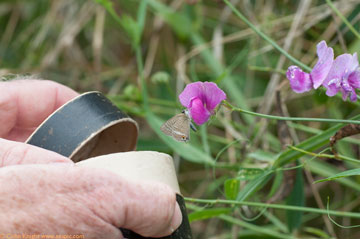
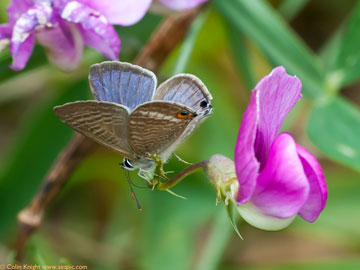
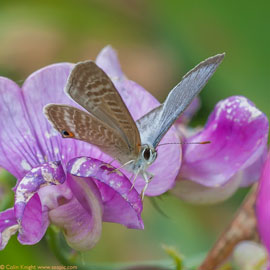
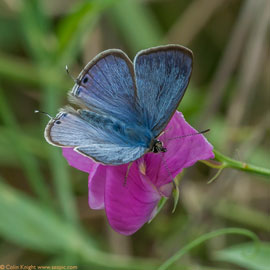
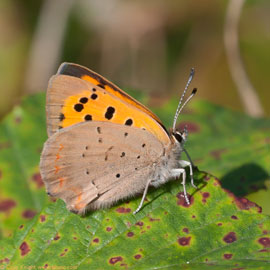

News for Monday 23 September: Yesterday morning I was privileged to observe Mark Colvin releasing two male Long-tailed Blues into the wild in Sussex. They had been reared from wild-born British larvae and were released back into the area where they had originally been found. The full story will be published in the next BC Sussex Annual Report. I then travelled to Newhaven Tide Mills where I was joined by many BC Sussex members scouring the area for a sighting. I watched a Small Copper chase a Small Tortoiseshell all over a patch for several minutes. (Colin Knight www.seapic.com)
Monday 23 September 2013
Butterflies seen at Thorney Island while we were birding etc; Speckled Wood 2, Red Admiral 2, Peacock 2, Comma 1, Small White 20+, Large White 4, Clouded Yellow 3, Small Copper 2, Common Blue 4. (Barry and Margaret Collins)
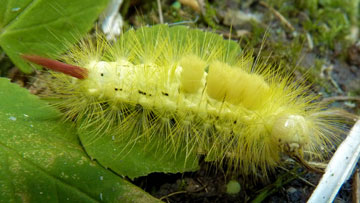
I was tidying in the garden today and out of a patch of grass, bramble and ground elder, a Pale Tussock moth caterpillar appeared. This is only the second one I have seen. The previous individual furnished by Michael Blencowe was lime green. This one was distinctly yellow which matched the dying ground elder perfectly. I was under the impression these caterpillars fed on deciduous trees mainly, however this one was actually feeding on Bramble. It took ages to get it to smile at the camera, but it was worth the wait. A Spectacular caterpillar. (Richard Roebuck)
I noticed two Privet Hawk-moth caterpillars feeding on the leaves of a forsythia in my garden today. Must have fancied a change of diet as they normally eat privet and sometimes ash and lilac leaves. (Stuart Ridley)
And finally... Nick Linazasoro's delightful grasshopper photo taken on 22 September 2013 at the Tide Mills is actually the Lesser Marsh Grasshopper (Chorthippus albomarginatus), a species found mainly on floodplain grassland. It has longer wings than the Meadow Grasshopper, even more parallel lines on the pronotum (over the thorax), and that well pronounced white line on the forewings. (Ralph Hobbs)
Sunday 22 September 2013
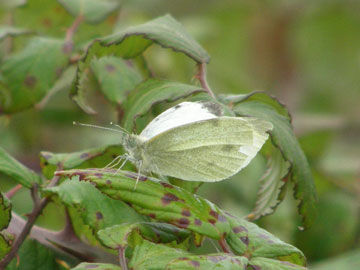
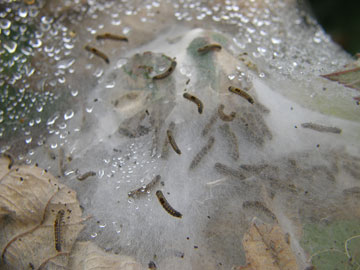
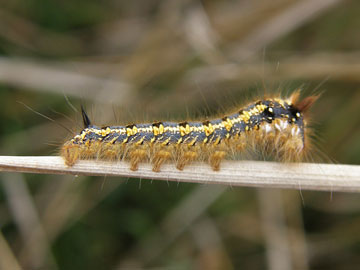
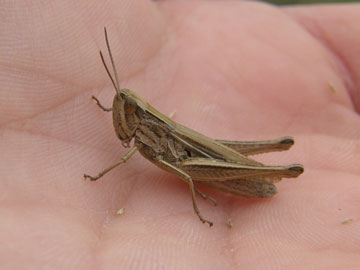
This morning we ventured to look for a needle in a haystack known as a Long-tailed Blue at the Tide Mills in Newhaven. We only had a brief window of opportunity due to other family committments but alas we were unable to locate this wonderful butterfly. We did see one Red Admiral, one Small Heath, and Small White and several unusual caterpillars. It is likely that we would have noticed more if we didn't keep having to look exactly where to place our feet each time to aviod the masses of dogs mess. (Nick Linazasoro)
Friday 20 September 2013
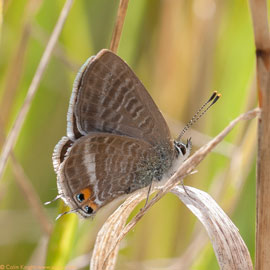
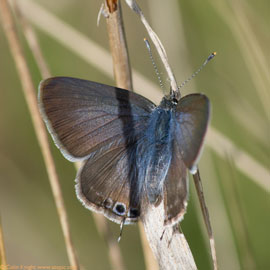
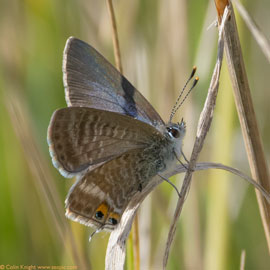
This morning I found a newly emerged female Long-tailed Blue at Newhaven at TQ4587800271 (by the Tide Mills pool). My sense of exhilaration and satisfaction at finding this rare butterfly is difficult to describe. I was told by a local butterfly enthusiast that some Everlasting Pea was in flower 6 weeks ago at the find spot but I could not find the plant. Full report on my blog. (Colin Knight www.seapic.com)
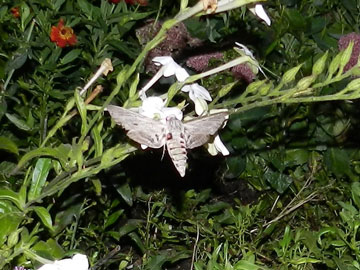
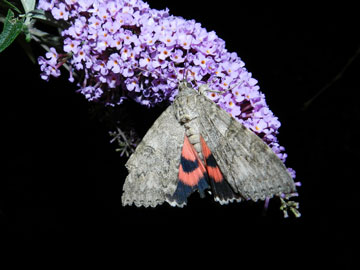
The return to sunny and warm conditions brought out the butterflies in my garden in Edburton with a Clouded Yellow, 10 Commas, Small Tortoiseshell, 3 Red Admirals, Small Heath, 6 Speckled Woods, 2 Meadow Browns, Common Blue and plenty of whites. A quick look on the hill behind the house produced 10 Adonis Blues dotted around + Brown Argus. After dark I was wandering around the garden with a torch and a huge Convolvulus Hawk-moth nearly knocked me over and proceeded to feed on nicotiana. I then found a Red Underwing on one of the buddleias and a back-up cast of L-Album Wainscot, White Point, Frosted Orange and Lesser Yellow Underwing + common species. With three species of reptile, 3 of Bush Cricket and 2 Spotted Flycatchers is was a great day in the garden. (Tony Wilson)
Three Clouded Yellows at Newhaven Heights LNR, quiet otherwise with just a handful of Small and Large Whites. (Liam Curson and Jake Gearty)
Tuesday 17 September 2013
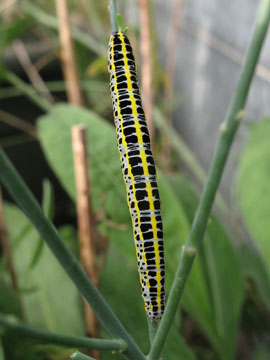
Just found a nearly full grown Toadflax Brocade larva in our front garden (Westfield, E Sussex) for only the second time in over 30 years living here! This one is on Purple Toadflax eating the unripe seedpods, whereas the last one just a few years ago was on Common Toadflax. Both foodplants still grow in virtually the same spot - just in front of our metal garage door which is south-facing. The door gets very hot in the sun, no doubt producing a rather favourable microclimate for this mainly SE and coastal species! (Ralph Hobbs)
Monday 16 September 2013
Between rain showers at Southerham today; Meadow Brown, Small Heath, Small White, Common Blue, Adonis Blue and a fresh Small Copper (Michael Blencowe)
A walk around Stansted Forest SU745110 from 11:40 to 13:20 produced 64 Speckled Wood, 3 Comma, 4 Small White and one washed out Common Blue plus 4 Migrant Hawker. (Barry and Margaret Collins)
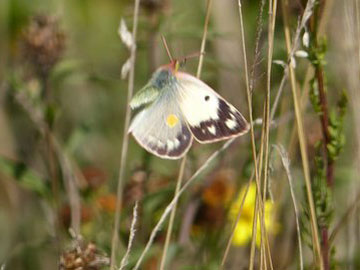
More news for Monday 2 September: I was just about to delete some of the photos that I had taken on 2nd September at Arlington Reservoir and I realised that one I had assumed to be a Large White was in fact the Clouded Yellow form helice in flight. (Cyril Burwell)
Sunday 15 September 2013
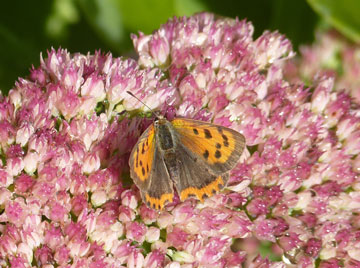
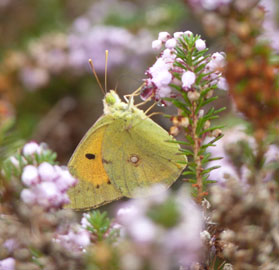
Seen in Crowborough garden, perhaps the last sightings in the garden apart from a small colony of Speckled Woods at the end of the garden and a few Small and Large Whites. Nothing seems to be visiting the sedum. However, a lone Small Copper showed up today on sedum despite the wind and rain and surely the last Clouded Yellow on heather, both trying to escape the elements. (Simon Quin)
I saw four Speckled Wood on allotment in Hurstpierpoint today, BN6 8TB area, feeding on blackberries and raspberries, have never seen them there before. (Rebecca Rees)
News for Saturday 14 September: Saw the first Vestal moth of the Autumn yesterday, fluttering along the conservation headland of a stubble field. (Graham Parris, Isfield)
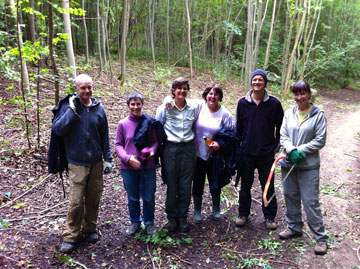
More news for Saturday 14 September: The first woodland management session of the year, well perhaps? The Coldean woodland workers worked removing 25 year old Ash from the main ride, whilst leaving Elm saplings. This year the discovery of Elm disease has lead to the removal of some mature Elms and so the work we undertook on Saturday 14th September was designed to encourage Speckled Wood and White-letter Hairstreak. (Dan Danahar)
Saturday 14 September 2013
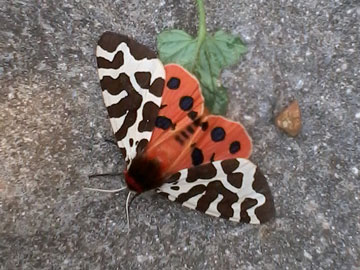
News for Wednesday 28 August: This beautiful moth was sitting very still for a few minutes next to our vegetable bed in Hove, East Sussex and wasn't even disturbed by me crouching down close to take the photos. After a bit of research I found out it was the Garden Tiger Moth, which now seems to be very much in decline and a species of conservation concern under the UK Biodiversity Action Plan. (Miriam Roberts)
Thursday 12 September 2013
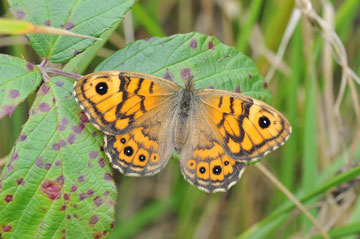
A surprisingly fresh female Wall Brown today on Greenway Bank. Speckled Wood everywhere and at last some Small Coppers. All this is a very small window of sunshine!! http://bobsbutterflies.blogspot.com/. (Bob Eade)
News for Thursday 12 September: I was at home in Hove in our sun lounge around 9.15am on Wednesday when a dark fluttering outside suggested something more than a leaf in the wind. I followed the movement and a very fine Red Admiral landed on the fence. It rested there in the sun, mostly with its wings closed, for more than an hour while I finished breakfast and read my paper. I decided it deserved a photo but it was too quick for me and made off as I approached. (John A Heys)
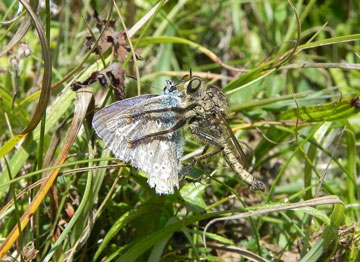
News for Monday 2 September: Common Blue (above) fallen prey to Robber Fly sp. on 2/9/13 at Frog Firle. I think the Robber Fly species is Machimus atricapillus. (Nigel Kemp)
Wednesday 11 September 2013
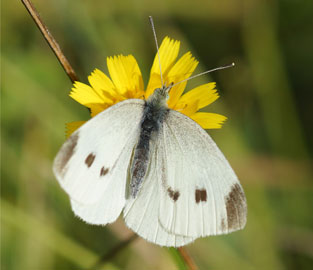
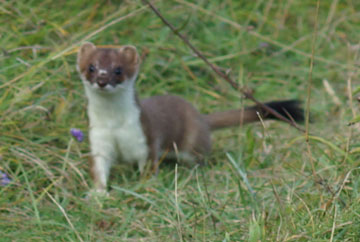
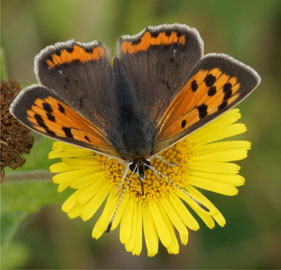
This morning I went to the meadow at Kithurst Hill for the first time. I wasn't hopeful as the weather was cool. Just after I arrived though I saw a stoat bounding down the path towards me and managed to get a blurry photo. I saw 3 Specked Woods and one white butterfly (not sure if Small or Green-veined).
I then went on to Pulborough Brooks and saw seven Speckled Woods, three Common Blues, two Meadow Browns, one Small Copper, one Clouded Yellow and some Small Whites and Green-veined Whites. (Katrina Watson)
News for Saturday 7 September: Forgot to mention in my last report that I saw a late Gatekeeper in Abbots Wood last Saturday. It was still in reasonable condition and enjoying the afternoon sun. (Chris Hooker)
News for Thursday 5 September (last day of summer...): My father, Roy Symonds reports the following sightings from Kingley Vale National Nature Reserve (SU824098) on the 5th September. The temperature was a scorching 27.5\B0C. Brimstone (8M 2F), Small White (64), Large White (2). Clouded Yellow (3), Common Blue (7), Meadow Brown (19), Speckled Wood (10) and Small Heath (5). (Richard Symonds)
Tuesday 10 September 2013
I trekked up and down the west and middle coombes at Chantry Hill today to see what is still around. It was quite chilly and windy at the top of the hill with a NNW wind and so most of the activity was in the lower slopes where it was more sheltered. The good thing about Chantry Hill is that whatever the direction of the wind there will be shelter somewhere. Unsurprisingly, the numbers and variety of butterflies was much reduced with species and approximate numbers as follows: Meadow Brown (50), Common Blue (20), Small Heath (10), Small White (10), Speckled Wood (3), Clouded Yellow (1), Brown Argus (1). I shall miss the Clouded Yellow as they are an attractive addition to our flower meadows with their splash of colour and their exuberant energy. On the hike back there was a single Large White and a Comma. Back home there was a Small Tortoiseshell and Small Copper on what remains of the Buddleia. Both were in pristine condition and I imagine emerged either that day or the day before. (Martin Kalaher, Storrington)
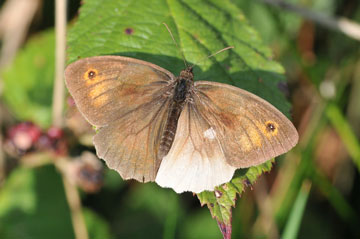
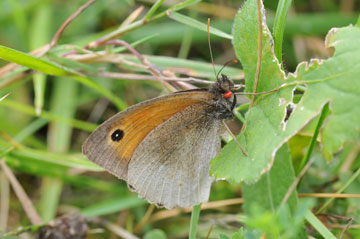
The Hummingbird Hawk-moth has shown again today for a short while. This is now 6 days running it had appeared in the garden. A quick visit to Frog Firle revealed a Meadow Brown ab. semi alba. It posed well for open wing shots but was reluctant to settle with wings closed for an underside. (Bob Eade)
Monday 9 September 2013
News for Saturday 7 September: Visited Steyning Rifle Range from 10.30am and recorded: 15 x Speckled Wood, 20 x Small White, 17 x Meadow Brown, 2 x Green Veined White, 5 x Adonis Blue, 11 x Common Blue, 2 x Small Heath, 1 x Clouded Yellow, 2 x Large White, 2 x Small Tortoiseshell, 1 x Brown Argos, 2 x Small Copper, 1 x Wall, 1 x Yellow Shell, 2 x Common Carpet, 1 x Barred Marble and lastly on way out 1 x Brown Hairstreak at 2,15p.m heading down path towards allotments. Don't think it could have been anything else, was flying quickly around trees high up before disappearing over tree tops, was small size and light brown (unlike Speckled Woods nearby).
Onto Mill Hill afterwards, on way up from Red Lion Pub 1 x Comma, 2 x Speckled Wood (Grid Ref TQ208062), At Mill Hill = 1 x Small Heath, 11 x Adonis Blue, 82 x Meadow Brown, 2 x Clouded Yellow, 18 x Common Blue, 2 x Speckled Wood, 2 x Chalkhill Blue, 1 x Yellow Shell, 7 x Treble Bar. (David Gower)
Sunday 8 September 2013
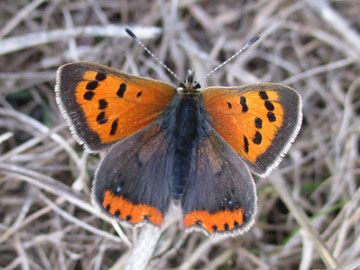
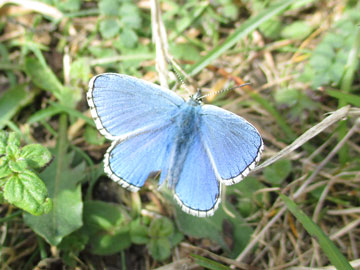
Walked the Downs near Eastbourne today and there were plenty of butterflies to be found across the middle of the day. The highlights were a hot-spot just west of Butts Brow at TQ577022 where I found 6 Adonis Blues (the first time I've seen them here), 5 Small Coppers plus several Common and Chalkhill Blues, 2 more Clouded Yellows in a valley near to East Dean, and Wall Browns at Friston and Folkington. (Chris Hooker)
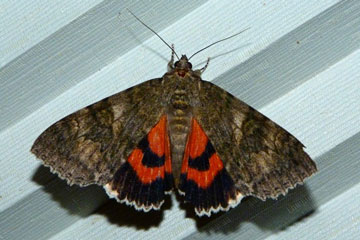
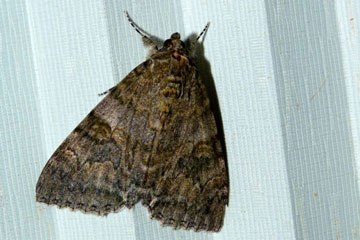
In September 1999 I viewed my home, prior to purchasing it, for the first time. One of the most appealing things seen on that day was a Red Underwing moth flying around the eves of the house in the autumn sunshine. Over the years I have seen the odd individual but it was not until tonight that I was able to actually photograph one because this individual flew into the house through the front door! (Dan Danahar)
Saturday 7 September 2013
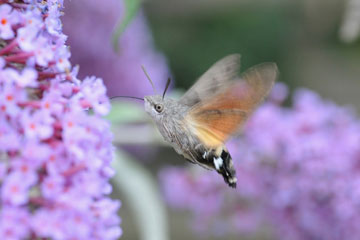
The Hummingbird Hawk-moth has continued brief visits to the garden for the last 3 days. Often late in the day, but today, it was around lunchtime and it stayed long enough to fire off a few photos, although the cloudy, windy conditions did not make it easy with a fast moving moth!! More at the old blog http://bobsbutterflies.blogspot.com/. (Bob Eade)
Thursday 5 September 2013
Ashington: Just for the record I saw a worn but not tatty Silver-washed Fritillary fly through the garden mid-afternoon. I chased after it briefly as it flew strongly along a field edge and out of site. (Richard Roebuck)
Wednesday 4 September 2013
Grid Ref TQ316081: Small Coppers have been present on my front lawn in Hollingbury, Brighton for many weeks in their usual form but as a result of Neil Hulme's photos of the blue spotted f. caeruleopunctata I had a look at the first example present and this was indeed a blue-spotted individual. Then turned my attention to a male Common Blue nearby which lacked the cell spot which would indicate it is of the f. icarinus.
In previous weeks there have been several female Common Blue of the f. supracareulea present with a combination of orange spotting on the uppersurface and a bright blue colour.
Also
TQ325082:I decided it may be high time I paid a visit to the south-facing coomb of the Wild Park, Brighton to see if the recent grazing and clearance work carried out over the last couple of years has met with any success (especially in view of the troubled history of vigilante fence vandalism on the site). I was delighted to be met with a comparative profusion of butterflies. Highlights included a single Silver-spotted Skipper, double figure Adonis and Chalk-hill Blues, numerous Common Blue, Brown Argus, Meadow Brown and Small White with a couple of Clouded Yellows in the mix! (Philip Thompson)
A Hummingbird Hawk-moth visited the garden this evening nectaring for some time on red velarian. (Bob Eade)
Tuesday 3 September 2013
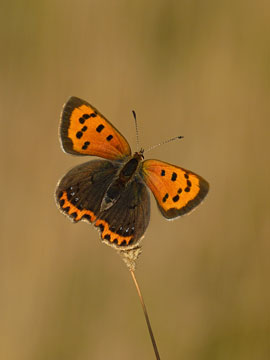
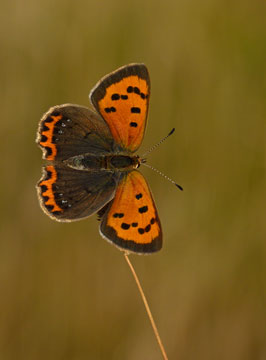
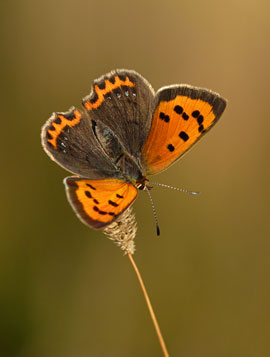
One of the few species which has continued to struggle this season, following a poor showing last year, is the Small Copper. I've seen very few in 2013, so make no apology for submitting three images of this stunningly beautiful, blue-spotted specimen (ab. caeruleopunctata) found on Cissbury Ring. (Neil Hulme)
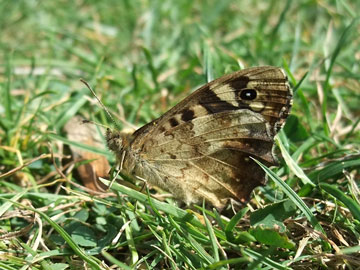
This morning we broke up a shopping trip with a stroll through St Anne's Well Gardens in central Hove and saw Speckled Woods (2 - see picture of the more intact one), a Holly Blue, a smart-looking Comma and plenty of Small Whites. We'd noticed another Holly Blue too, in a garden nearby. (John & Val Heys)

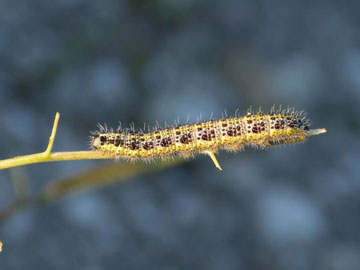
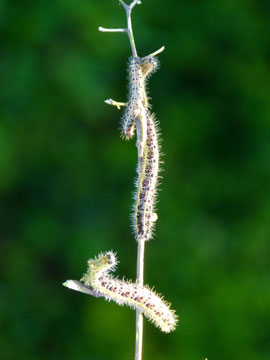
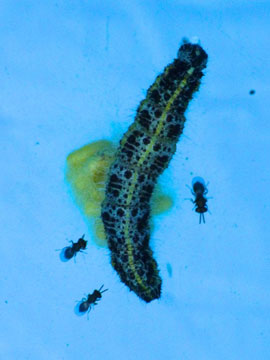
I have a neighbour in Coldean, Brighton, who has recently built himself a large garden workshop, on which he constructed a chalk roof. Indeed we have spoken about the possibile niches that this habitat might produce for chalk grassland butterflies.
However, surprisingly wild rocket colonised the roof and was quickly littered with eggs of the Large White butterfly. There were so many caterpillars that all of the photosynthetic material on the Rocket was eaten, including that which covered the stems. I would estimate easily a thousand caterpillars on the roof.
Of course these numbers of caterpillars have attracted parasitic wasps and I could not find a single Large White chrysalis, but there were many caterpillars walking off of the roof and around the garden. I did interestingly find a single Small White chrysalis but no caterpillars. It was quite a remarkable spectacle. (Dan Danahar)
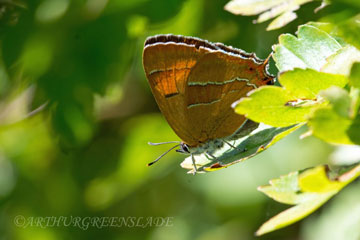
News for Monday 2 September: One of the two Brown Hairstreak seen at Steyning Rifle Range yesterday (above). This particular one seen along the path leading to the reserve opposite the entrance to the allotments. (Arthur Greenslade)
Monday 2 September 2013
I saw a very late Purple Hairstreak just north west of Warnham this morning. (Sam Bayley)
Stopped off at Malling Down on my way home from work again and, as anticipated, there were plenty of butterflies around. The pick of the bunch were good numbers of Adonis Blues, 2 Clouded Yellows and several Silver-spotted Skippers (a new species for me at this site). (Chris Hooker)
I got lucky a few days ago when a female Brown Hairstreak landed 3-4 feet away from where I was standing in my back garden. Since then I have spent a few hours checking the local hedgerows for this species and have had no luck. Today I searched the local fields and hedgerows and once again drew a blank but did have some interesting sightings. Many of the hedgerows are very overgrown and several of the fields are not grazed at all, or very lightly and only occasionally. As a consequence some of the fields are covered with Common Fleabane. I have not previously had a very high opinion of this native plant but with the thistles no longer in flower it is currently providing most of the local available nectar and the butterflies are just loving it!
Species with approximate numbers as follows: Meadow Brown (50), Small White (50), Speckled Wood (21), Common Blue (20), Large White (10), Small Copper (6), Comma (2), Brimstone (1), Painted Lady (1), Brown Argus (1). There were so many Speckled Wood on the mature hedgerows. They clearly have enough light and shade on a mature hedge to satisfy their requirements. (Martin Kalaher, Storrington)
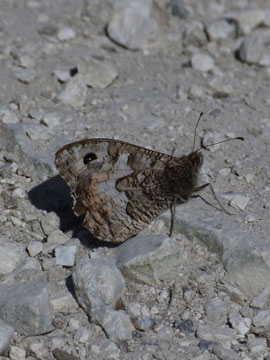
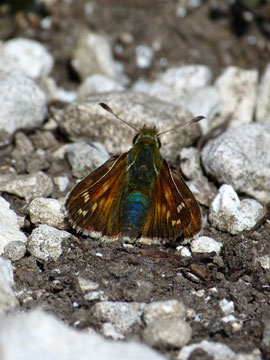
I had a couple of hours spare in East Sussex this afternoon, so I went for a walk over Wilmington Hill. Few butterflies were seen low down but as I climbed higher so they became more evident.
Much to my surprise as I reached the top of the track, above Ewe Dean, I saw a single Grayling. It was sitting in the middle of the chalk road and was kind enough to allow me to take several photographs of it. It occasionally flittered about, in the way that only Graylings do, like swooping Swallows. It had a little damage on its hind wings and was worn. I then walked on to Deep Dean because I wanted to check on the Silver-spotted Skipper colony at the north eastern end of the dene. Here I came across 5 or 6 individuals, each looking a little worse for wear as well. Whilst on the walk I also saw: Meadow Browns, Small Heath, Chalkhill Blue, Common Blue, Small Copper and Small Whites. On my return home the Grayling was still defending its patch. It was the only one I saw but it was a welcome sighting. (Dan Danahar)
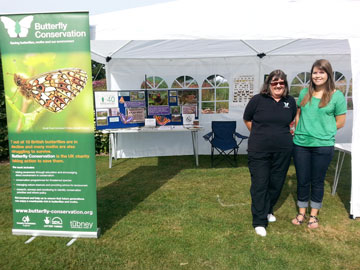
News for Sunday 1 September: Sussex Branch took up a kind offer of a stand at the Unusual Plant and Art Fair - Henfield on Sunday. Nigel Symington, Audrey Kemp and Gwen Buck manned the stand and received a steady stream of interest from the 2,000 or so visitors to the fair. Most had attended because of their interest in gardening, but we were kept busy with a steady stream of visitors, many of whom brought along pictures they had taken of butterflies in their gardens and asked if we could help with identification. 2 new members signed up on the day, and some 40 or so signed up to receive Butterfly Conservation's regular e-newsletter. (Nigel Symington)
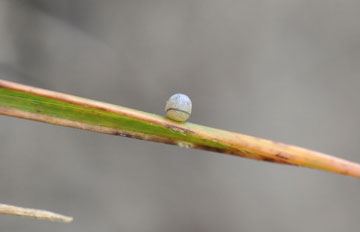
More news for Sunday 1 September: The Wall Brown ova I found last Monday has now developed an interesting pattern to it 6 days later. Check out http://bobsbutterflies.blogspot.com/ for the growing Wall Brown. (Bob Eade)
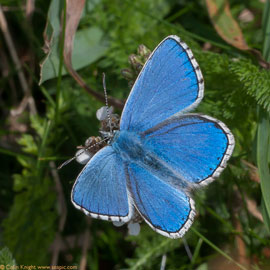
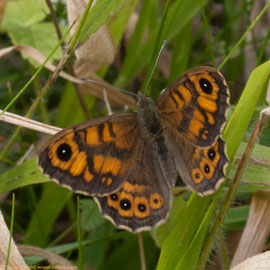
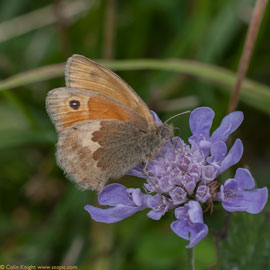
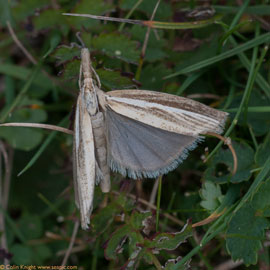
Recent news: On a visit to Anchor Bottom on Friday I was amazed by the large number of Adonis Blues which covered the north hillside. On Saturday at Kithurst Hill and Chantry Hill I saw Clouded Yellows and Silver-spotted Skippers at Chantry. A pair of Red Kites drifted over Kithurst Hill. On Sunday I climbed Cissbury Ring and found six Adonis Blues in excellent condition, a Wall and six Clouded Yellows. (Colin Knight www.seapic.com)
News for Friday 30 August: A single Clouded Yellow flew through Suntings Farm, Chuck Hatch Lane near Hartfield on Friday. (Tom Simon)
Sunday 1 September 2013
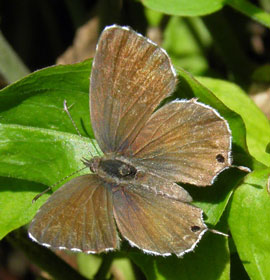
And 2013 continues to surprise us. Gordon Jarvis photographed this Geranium Bronze in his garden in Peasmarsh. Read the full report at www.rxwildlife.info/. Originally an African species this butterfly has spread across Europe either naturally or as an accidental import on plants. The Geranium Bronze was first recorded in Britain in Lewes in 1997 by our very own John & Crispin Holloway. You can read an account of their story here www.ukbutterflies.co.uk/species.php?species=marshalli. This Geranium Bronze is the 49th butterfly species recorded in Sussex this year (our usual 45 plus Swallowtail, Long-tailed Blue, Monarch and Geranium Bronze) - will we get to 50 by the end of the month? What could possibly be next? Queen of Spain? Bath White? Short-tailed Blue? Mazarine Blue? Camberwell Beauty? Scarlet Jezebel? (Michael Blencowe)
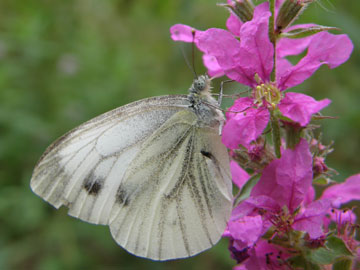
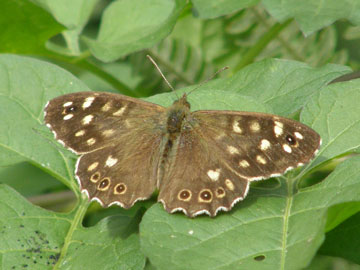
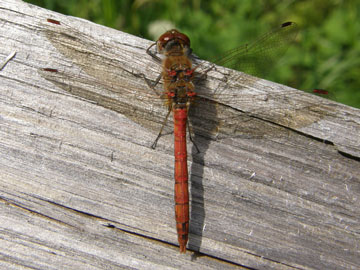
Today our family ventured around Wakehurst Place. It was not a butterfly hunt, but I could resist in taking one or two butterfly shots. We only saw Speckled Wood, Large White, Small White, Green-veined White and Meadow Brown but it was a lovely day out. (Nick Linazasoro & Family)
A very productive couple of walks this afternoon resulted in 18 species and some pleasant surprises! I started off walking around the Downs at Folkington and Windover Hill. Highlights were 6 Grayling and 2 Clouded Yellow along with good numbers of Silver-spotted Skippers, Chalkhill Blues and Wall Browns. I then moved on to Abbots Wood where the highlights were 2 Silver-washed Fritillaries, 3 late Gatekeepers and a Wall Brown (my first at this site). (Chris Hooker)
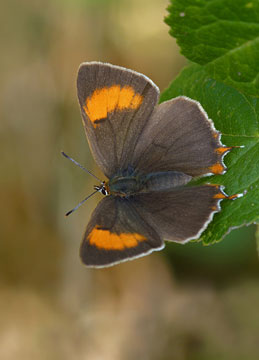
Having seen a couple of Brown Hairstreak in perfect condition yesterday, I couldn't resist another bash at Steyning Rifle Range this morning. The weather was much better than forecast and I was surprised to have the place to myself, with the exception of BC Sussex member Leigh Prevost. Two visitors from Rochester appeared later in the day, just in time for Leigh to locate a Brownie for them; their first ever! Of the 7 females I saw at close range, 4 were in very good condition, and 2 were completely unmarked - a great result for September! (Neil Hulme)
News for Saturday 31 August: An unplanned visit to Ditchling Common on Saturday produced 2 Brown Hairstreak, both West of the car park, the first one I observed attempting to egg lay was in perfect condition, the second had very slight tears in its wings. It was a real joy to see them closer to home. (Jamie Burston)